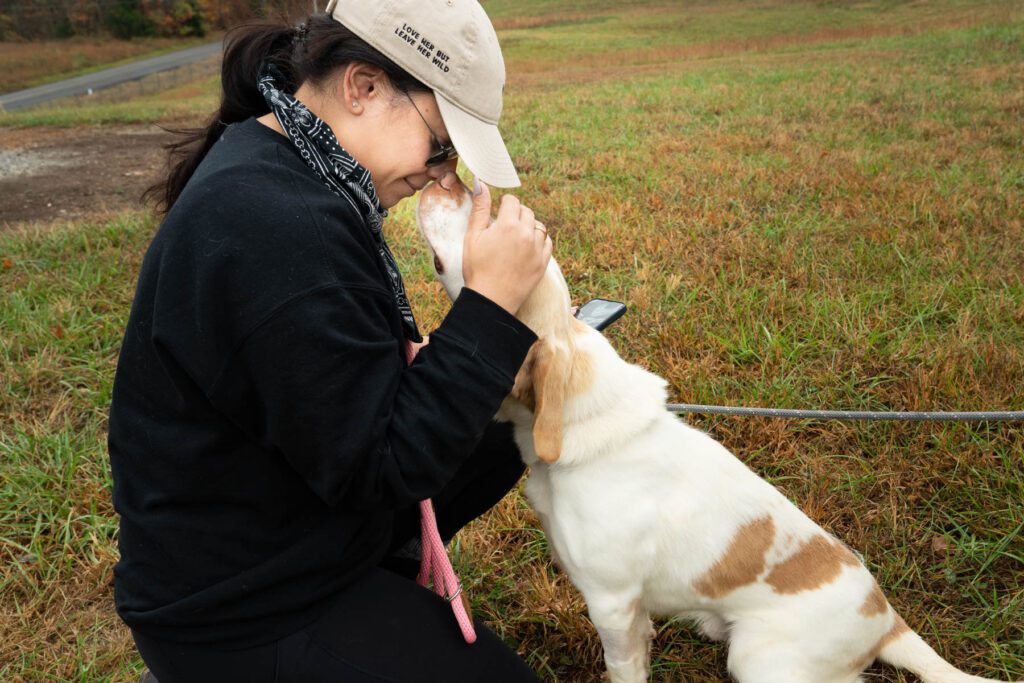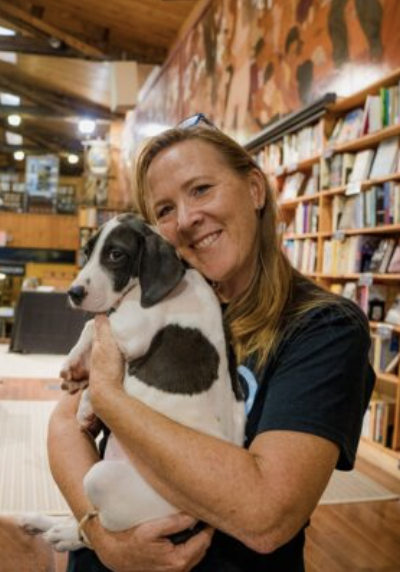While in Tennessee we spent a day with one of my favorite rescue women – Britt. Britt is a volunteer and outreach coordinator for CASA Transport . As part of that role, she spends a lot of time visiting dog pounds and shelters around middle and western Tennessee. She scouts out the dogs, gets pictures and videos, often vaccinates and tests for heartworm, and builds relationships with the ACO’s and dog catchers.
Britt’s contagious passion for the dogs and easy rapport with everyone she encounters makes her the perfect concierge for rescue in Tennessee. She’s a nurse by training, but these days she rescues full-time.

At both of our stops, we pulled out dogs to photograph and get to know them while Britt furiously worked her phone, networking the dogs to rescues all over the country. Once a rescue ‘tags’ a dog, she knows that dog is safe and starts working on finding foster if necessary and puts that dog in the que to catch a ride with CASA to the receiving rescue.
At Robertson County Animal Control, we met ACOs, Brad and Randy. The shelter handles between 1000 and 1500 animals a year. They also shelter cats and at the time of our visit, they had a handful of ducks and chickens they were holding for a cruelty case. The kennels are traditional ones, housed in a metal building. They are pretty tight quarters for some of the larger dogs. The county is building a new shelter across the road, but progress has been slow.





The shelter works to get every animal spayed or neutered, a first round of vaccines, and microchipped before adopting it out, although many of the dogs get out via rescue. They only euthanize for medical necessity or public safety. There were only two open kennels, but three dogs were scheduled to come in that day. I asked Brad what that meant and he said, it meant they’d make room.
Randy has a college degree in wildlife biology and criminal justice. I asked him why he took this job and he said he likes animals more than people most of the time. For him, the best part of this work is being able to help those who need it most. Sometimes it’s the people and sometimes it’s the dogs.
Brad pulled out six or seven dogs that Britt needed more information or pictures for and it was immediately clear that the dogs really like Brad as much as he likes them. He tries to get each dog out to work with it at least one time a day. Sometimes he puts the crazier ones on a longline so they can run around a bit. He also gives them greenies every day to try to help their teeth.







One of the dogs we met (that Britt was able to get a rescue to tag while we were at the shelter!) was Jughead, a speckled dog with humongous feet and demodex mange. Jughead was a big softie who only wanted to cuddle with whichever of us was close, leaning into each of us at the slightest touch. He is young, but his ankle joints bent out oddly and he had a gimpy walk. Most likely he has been suffering from malnutrition. Brad said he’d put on weight since arriving at the shelter and Britt planned to get him into foster care to try to improve his health before he could make a transport going to New England in three weeks.



Each dog we pulled out was sweet and eager for attention. We met two senior dogs, King a large brindle dog with cataracts and Masie a gray-faced sweetheart. We also met Butch, a gorgeous caramel color dog who defines handsome (imho), Ladybird, a young collie mix, Lulu, a heeler mix, and Henry, who looked to me like he might have some cocker spaniel in him and who really didn’t like being in a kennel (he told us so).



Before we left we set up peanut butter boards for some of the more active dogs to try to quell their boredom. Peanut butter boards are a simple dog enrichment idea we saw when we visited Camp Jean in Kentucky. You smear peanut butter over a plastic cutting board and then attach the cutting board with a carabiner clip to the kennel door. It gives the dog plenty of lick time, which helps to reduce stress. We left Brad with two more jars of peanut butter.


Living in a shelter is hard, so little things like volunteers who stop by even for a few minutes to walk a dog or visit with it or hang up a peanut butter board, can truly make a difference.
If you’ve got any time to offer, consider volunteering at your local shelter or rescue. Most don’t require any special skills and will be happy to have your help no matter how little or how much time you have.

Until each one has a home,
Cara
If you want to learn more, be sure to subscribe to this blog. And help us spread the word by sharing this post with others. Visit our website to learn more.
You can also help raise awareness by following/commenting/sharing us on Facebook, Instagram, YouTube, and Tik Tok!
Learn more about what is happening in our southern shelters and rescues in the book, One Hundred Dogs & Counting: One Woman, Ten Thousand Miles, and a Journey Into the Heart of Shelters and Rescues (Pegasus Books, 2020). It’s the story of a challenging foster dog who inspired me to travel south to find out where all the dogs were coming from. It tells the story of how Who Will Let the Dogs Out began. Find it anywhere books are sold. A portion of the proceeds of every book sold go to help unwanted animals in the south.




Leave a Comment
Sign up for our newsletter
Sign up to have our latest news, grant updates, shelter visits, and more delivered to your inbox.
Share this:
Like this: